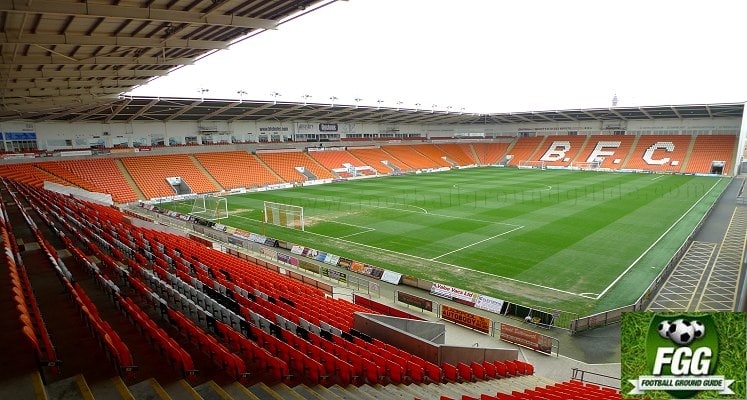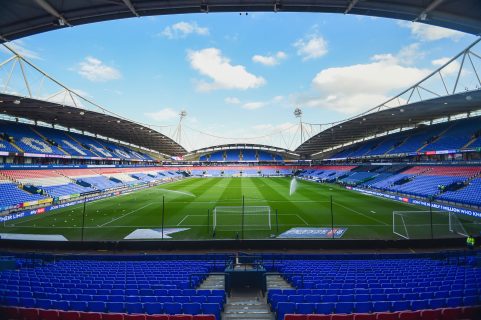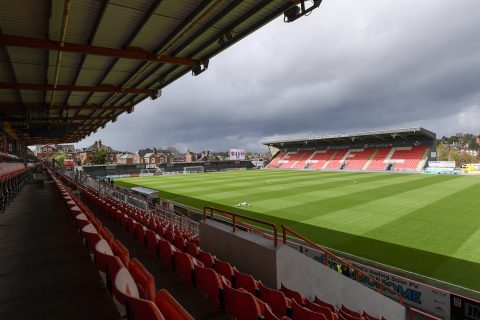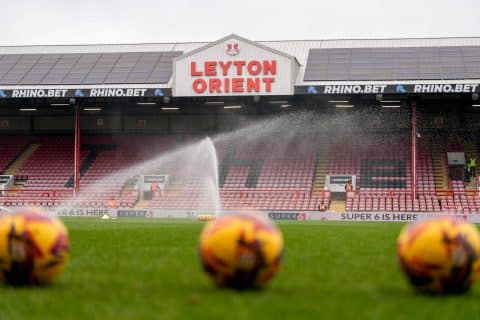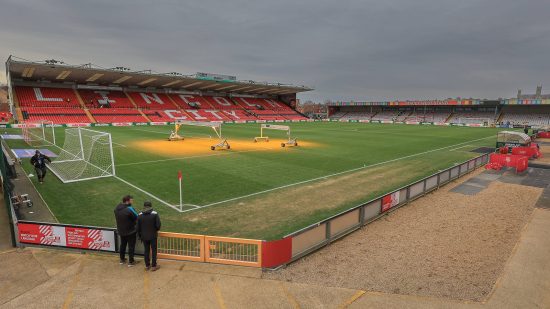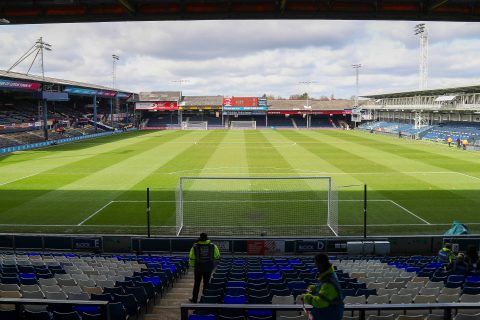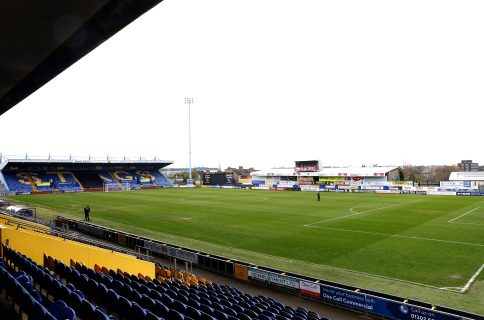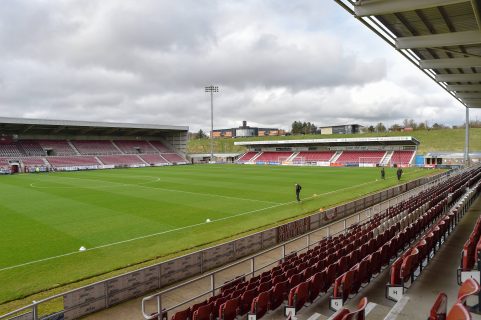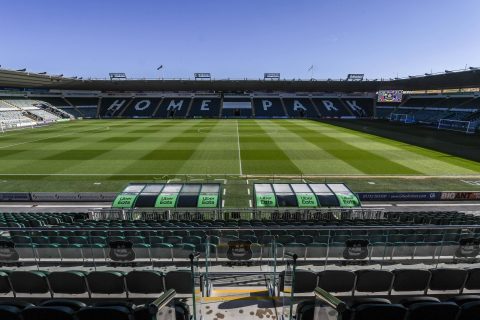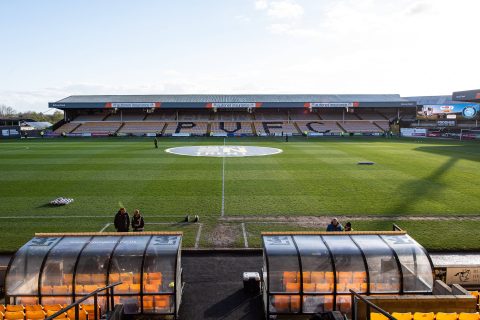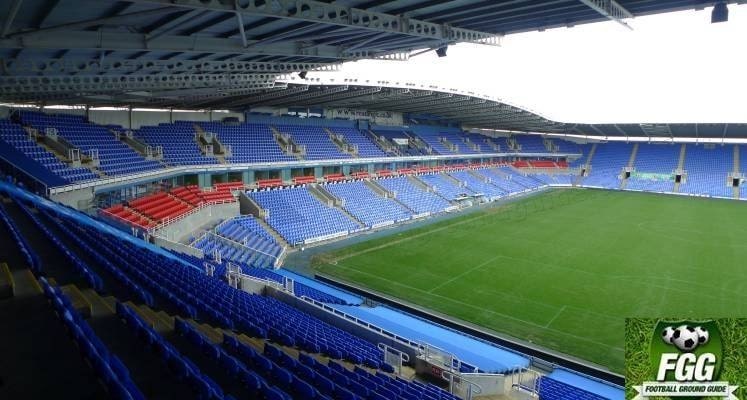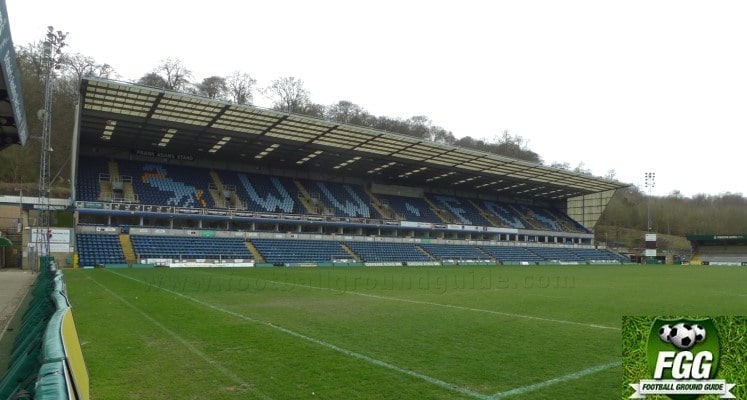League One Stadiums – Overview
Despite being the third tier of English football, there are still lots of impressive grounds for League One clubs to visit.
Many people think the lower league grounds aren’t able to offer the same feel or quality that the Premier League and Championship stadiums do. However, with the way the modern game is going with stadiums and the fact that League One has teams who have been at the top of the tree in English football, they would be wrong.
With that in mind, we would like you to take a look at our view on some of the best ground League One has to offer in 2025. With some key statistics for each stadium mentioned.
Vale Park – Port Vale
Even though Vale Park has a maximum capacity greater than 19,000, a home game rarely sees more than 10,000 fans attend. While we can’t say for sure, we’d imagine that this is because the club has lost some of its appeal, given that Port Vale have been struggling in League Two for a while before finally earning promotion last season.
And concerning the stadium’s history, it has been in its current location since 1950, making it relatively new compared with some of the other League One grounds we’ve covered. Since this date, the ground has undergone a few changes, although not all have been significant.
Specifically, the notorious drainage problem has been resolved, and modern floodlights have also been installed to allow for night matches. All of this has been done on a pretty tight budget, too, so we must say well done to the clever minds behind the changes.
Kenilworth Road – Luton Town
Luton Town have been at Kenilworth Road since 1905, when the stadium first opened, and they’ve risen and fallen through the ranks, securing plenty of history for this stadium with a capacity of 12,000 seats. The Bobbers Stand, opposite the Main Stand, was redeveloped for Luton’s 2023/24 Premier League campaign, providing a great view of the pitch for the home fans.
Luton Town are now back in League One, and even in this rank, Kenilworth Road is one of the smallest stadiums, which is why Luton are planning a move to another stadium in the near future, with a reported capacity of around 25,000 seats.
Toughsheet Community Stadium – Bolton Wanderers
Just over seven years ago this stadium was known as the ‘Reebok Stadium’ but with new sponsorship deals coming into play, it now has a new name. Out of the 24 League One Clubs, the former Premier League ground, now known as the Toughsheet Community Stadium, is the largest, with a maximum capacity of more than 28,000 fans!
The actual aesthetics of the stadium also complement this record, as the stadium looks pretty cool, we must say! It’s not just the visuals that make it stand out, either, for the stadium is one of the few with a hotel as part of its design, with some rooms having a great view of the pitch.
When this stadium was built in 1995, it was one of the very best in the land. It was built for a price tag of £25 million. During night games, the stadium really does shine bright above the city of Bolton.
Cardiff City Stadium – Cardiff
To enjoy this one, you’d need to take a trip across the border into Wales, but since this is the second-largest stadium in Wales, it’s worth it. Besides being the home stadium for the club, Cardiff City Stadium is also the designated stadium for international games involving Wales, with a capacity of more than 33,000. The stadium was built over 10 years ago, back in 2009, with a cool price tag of £48 million. We immensely enjoy the style of this stadium too, as it’s a pretty open ground with two tiers on all sides – perfect to develop a great atmosphere during games!
Like some of the other League One stadiums, this one is also used as a multi-purpose stadium, with rugby games, concerts, and other events taking place here. It’s all the more impressive that despite all of the activity, the quality of the stadium is maintained year-round.
The Eco-Power stadium – Doncaster Rovers
The Eco-Power stadium, formerly the Keepmoat Stadium, was built in 2006 at a cost of £20m to replace Doncaster’s iconic former stadium, Belle Vue. Their former home held the record for the UK’s largest playing surface from 1923 to the early 1980s, when Billy Bremner had the pitch shortened.
In terms of the Eco-Power Stadium, Doncaster Rovers have had a mixed bag of success. The club not only achieved their highest-ever finish at the new ground—mid-table in the Championship—but also suffered their lowest finish in around two decades, ending up in 18th position in League Two in the 2022-2023 campaign.
The Eco-Power is a very modern-looking stadium with a bowl-like shape, but it is unique in that it is the only football league club whose stadium is located next to a lake.
Madejski Stadium (Select Car Leasing Stadium) – Reading
With a capacity of 24,161 seats, Madejski Stadium, also known as Select Car Leasing Stadium for sponsorship purposes, is one of the biggest stadiums in League One.
It is also a relatively new stadium since it was built in 1998, and Reading has been playing here since they moved from their previous ground, Elm Park, that same year.
Valley Parade – Bradford City
Speaking of top-flight football, Bradford City has been involved in the Premier League, hence the large stadium where the club currently plays their home games. Valley Parade has a maximum capacity of just over 25,000. The stadium opened its doors in 1888, and until 1985, it barely changed. Of course, in 1985, the stadium witnessed the now-famous ‘Bradford City fire’, where more than 50 fans lost their lives. This was the catalyst for significant change at the club, and it even prompted change all over the country, as the use of wood to build stadiums was essentially scrapped altogether.
But moving beyond that awful day, Valley Parade is now a spectacle after the multi-million-pound redevelopment has taken place to host Premier League games, standing tall above the skyline of a city that was once a bit of a Northern powerhouse.
DW Stadium – Wigan Athletic
The DW Stadium is another one that stands out among the many others, and it is nestled on the outskirts of Manchester, making it relatively close to stadiums such as Old Trafford, so it’s definitely worth a visit!
Interestingly, it’s one of the few League One grounds that shares its use every week since the stadium is also where Wigan Warriors play their rugby league games when at home.
When fully packed, the DW Stadium can host over 25,000 spectators, and perhaps most impressively, since the stadium opened its doors in 1999, the average footfall has increased by more than 180%.
Home Park – Plymouth Argyle
Plymouth are back in League One after two seasons in the Championship, so fans from other teams in this rank will again get a chance to visit Home Park, Argyle’s ground since the start of the 20th century. Home Park has gone through many renovations, including the recent 18-month refurbishment of the Mayflower Grandstand.
All in all, Home Park has a capacity of nearly 18,000 seats, and it is a modern-looking stadium that many away fans like to visit.
Edgeley Park – Stockport County
Stockport County’s Edgeley Park is one of the oldest stadiums in the league, but also one of the best-looking and most unique stadiums. At one end of Edgeley Park, a large two-tiered stand towers over the rest of the stadium, while the stand opposite at the Railway End has just eleven rows of seats.
Stockport County recently spent just over a decade in non-league after being relegated in the 2010-2011 League Two season. Two seasons later, disaster struck as County were relegated once again, but this time to the National League North.
Local businessman Mark Stott purchased the club in 2020 and immediately cleared their debts. Stott pledged to return the club to the Football League, which was achieved in the 2021-2022 season after Stockport County won the league title.


